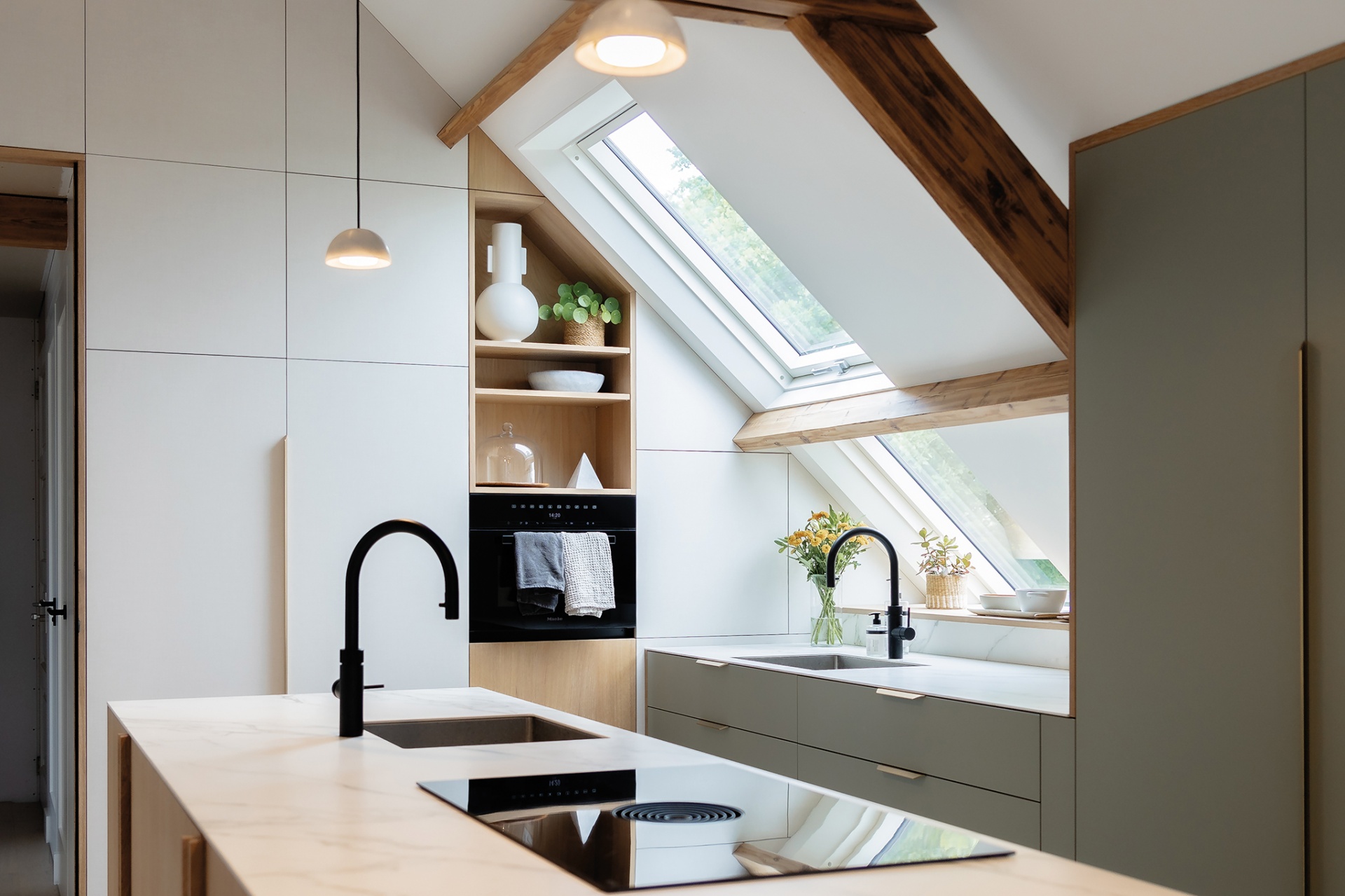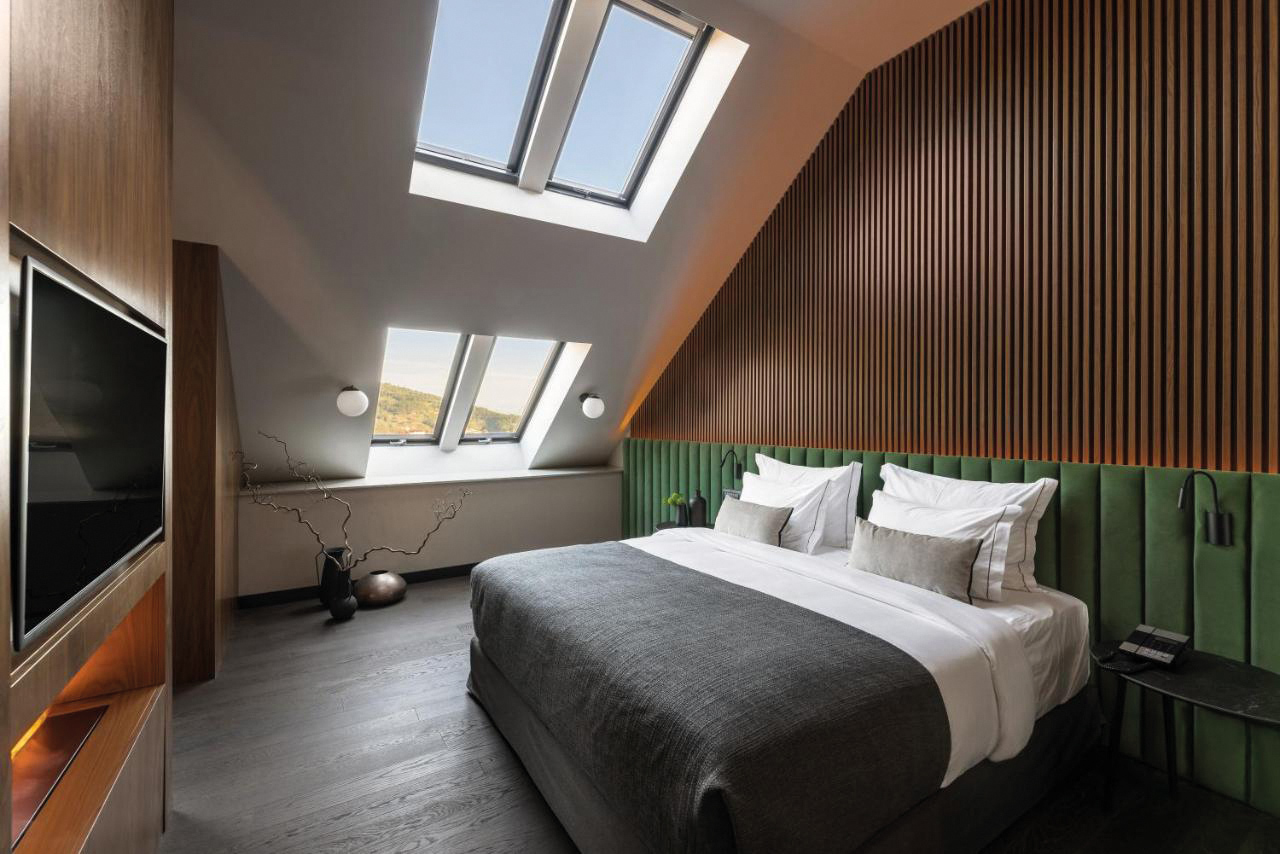The Impact of Roof Window Placement on Interior Design
Beautiful aesthetics and thoughtful design are just some of the advantages that the correct placement of rooflights can bring to an interior. When skylights are strategically positioned, they optimise natural light and can contribute warmth to a space. Additionally, roof windows connect the indoors with the outdoors, offering views of the sky and surroundings, which helps make rooms feel more open and expansive. Well-positioned rooflights also support ventilation by enabling free airflow, enhancing overall comfort in the home.
Roof Windows in Interior Design
Skylights are more than just architectural features. They represent significant opportunities within interior design. They transform the feel of a space, introducing light and creating dynamic, engaging interiors. When correctly placed, skylights improve energy efficiency, enhance comfort, and add visual appeal to any room.
The Importance of Roof Window Placement
Strategically placing roof windows can maximise natural light, reduce reliance on artificial lighting, and ensure even illumination throughout the space. For example, if a home receives sunlight mainly from one direction, placing skylights on that side will increase interior brightness and help regulate indoor temperatures effectively.
Impact on Natural Light Levels
Natural light is fundamental in creating bright, welcoming interiors. Even light distribution and avoiding dim corners are only possible when rooflights are positioned thoughtfully. While a centrally located skylight can light up a large area, multiple windows can be used to highlight different zones and introduce dramatic contrasts of light and shadow.
To achieve optimal results, consider how the sun moves across your space throughout the day. In colder climates, maximising sunlight is crucial, making south-facing rooflights ideal. Meanwhile, north-facing skylights provide soft, consistent light, making them well-suited for bedrooms or studies.

Temperature Control and Energy Efficiency
Roof window placement plays a key role in maintaining comfortable indoor temperatures and improving energy efficiency. With smart positioning, homeowners can reduce heating costs in winter and cooling expenses in summer. For example, east-facing windows allow warming sunlight in the morning without overheating rooms later in the day. West-facing windows and those in shaded areas benefit from gentle afternoon sun.
To support energy savings, choose rooflights with double or triple glazing and UV filters. These features help retain heat in winter, block excessive heat in summer, and reduce overall energy consumption – all while maintaining indoor comfort.
Key Factors Influencing Optimal Roof Window Placement
Acoustics: The placement and quality of rooflights can also influence a space’s acoustic environment. Choosing windows with effective sound insulation helps reduce noise from external sources like traffic or heavy rain. To minimise disruption, avoid positioning skylights near noisy areas such as busy roads or building sites. Opt for specialised glazing and proper sealing to further support noise reduction and preserve a calm, peaceful atmosphere indoors.
Orientation Relative to Cardinal Directions: The direction a roof window faces significantly affects the amount and type of light it admits:
-
North-facing: Ideal for spaces like art studios or bedrooms where even, glare-free light is preferable.
-
South-facing: Perfect for living rooms, where abundant natural light and warmth are desirable.
-
East-facing: Well suited for bedrooms and breakfast nooks, bringing in soft morning sunlight.
-
West-facing: Offers strong afternoon light, great for dining areas or workspaces.
Roof Pitch and Slope Angle:
The angle of the roof influences both the type and placement of roof windows. Steeper pitches can accommodate larger windows without compromising structural integrity, while shallower roofs are better suited to low-profile skylights. The slope also affects light entry; flatter roofs admit more daylight, whereas steeper ones may limit it, affecting placement decisions.
Size and Shape of the Windows:
Rooflights are available in a range of sizes and shapes, and the right option depends on the room’s use and architectural style. Large panoramic windows make a striking impact in open-plan living areas, while smaller rectangular skylights work well in bathrooms or attic spaces where privacy is a priority.
Room Function and Purpose:
The function of each room should inform the placement of skylights:
-
Living rooms: Group multiple windows for a dramatic, panoramic effect.
-
Bedrooms: Carefully control light to support restful sleep. An east-facing skylight, for example, allows for gentle morning light.
-
Kitchens: Centralised skylights over the ceiling help illuminate work surfaces effectively.
-
Bathrooms: Use frosted or remote-controlled windows to provide both privacy and ventilation.

Practical Tips for Integrating Roof Windows
Start by creating a daylighting plan: Assess each room’s lighting needs and track how sunlight enters throughout the day to guide positioning.
Coordinate with interior design: Match the skylight style with your décor, opt for frameless designs in minimalist spaces or thicker frames in traditional settings.
Blend functionality with style: Incorporate features like remote-controlled ventilation or integrated blinds to enhance usability while maintaining a clean, cohesive aesthetic.
FAKRO Products for Effective Interior Design
FAKRO offers a wide range of innovative roof window solutions that combine style with practicality, helping bring your design vision to life while improving daily living.
-
Energy-Efficient Solutions: Double and triple-glazed options minimise heat loss and maximise energy performance.
-
Balcony Access: Unique balcony-style roof windows provide luxurious access to the outdoors while flooding interiors with daylight.
-
Tailored Designs: FAKRO offers rooflights to suit all styles, from traditional to modern lofts, with versatile configurations and accessories to match your interior preferences.
-
Nature-Inspired Living: Understand how strategic roof window orientation can enhance natural lighting, improve energy use, and balance technical performance with beautiful design.
Unlock the full potential of your interior by exploring how roof windows can maximise daylight and efficiency. With FAKRO’s expertly engineered solutions, you can elevate your home’s design and comfort while reducing energy consumption. Don’t wait, transform your home’s lighting, style, and liveability today.






